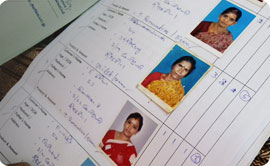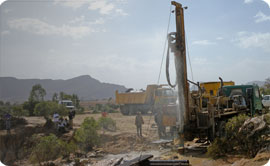We’d like to show the side of the world you don’t normally see on television.
|
Water.org is a U.S.-based nonprofit organization working to combat the global water crisis by providing safe drinking water and sanitation to people in developing countries. |
|
|
Water.org uses sustainable methods for assisting and empowering people in developing countries to address their water problems.
Community participation is at the heart of the Water.org philosophy. For a project to be truly successful, communities must be viewed and must view themselves as the owners of the project. That’s why Water.org engages communities at every stage and at every level– from project planning, building, and financing, to ongoing project maintenance.
By engaging the community, Water.org ensures that the technology selected for the project is appropriate to the local community and their particular situation. The community selects, with technical input from Water.org’ local partner organization, the type of project, what local materials to use, where it will be located, and how much it will cost.
Nearly one billion lack access to safe water . Get Informed
Digging a well is the easy part
Learn More  Sustainable giving through Water Credits Sustainable Gifts |
Water.org projects are funded through grants, loans, or a combination of grants and loans. Their loan program is called WaterCredit, and is the first of its kind.
The idea of building community-based water supply projects through a combination of grants and loans is new to the water sector. Until now, almost all water projects facilitated by other organizations have been funded entirely by grants, even when the individuals served by the project have the means to share costs.
Water.org loan program, the WaterCredit Initiative, has the potential to change the way water is supplied to people in the developing world.
Water.org works across the globe without prejudice to nationality, culture, religion or politics; following are countries (with links) to places where water.org has active programs. If you have any particular questions about their work, please contact them using their Information Request Form. If you are inclined to help any of these pojects, please do donate directly to their cause.
Africa
Ethiopia. Our program in Tigray, Ethiopia is serving 32,000 people in 76 communities and six schools. Tigray is a region in northern Ethiopia that borders on Sudan. Tigray is often one of the regions that is hardest hit by drought and crop failure.
Ghana. Program activities in Ghana take place in the Volta and Upper East regions, located in the southeast and northern parts of the country, respectively. Activities include community-based water, sanitation, and hygiene education programs.
Kenya. Water.org is working in the Kisumu region of Kenya. Located on the equator, Kisumu’s climate is hot all year. Much of Nyanza Province, where Water.org is working, is semi-arid and is subject to severe drought. Most people obtain their drinking water from Lake Victoria, seasonal rivers and streams, and hand-dug wells. All of these sources are contaminated. Women and children walk up to six kilometers each day to haul water, a task that can take three hours. Water is not only contaminated at its source but also from the way it is transported and stored.
Asia
Bangladesh. In Bangladesh, Water.org offers both grant and WaterCredit programs, and is addressing safe water needs in both rural and urban areas. Our urban program focuses on the slums of the capital city, Dhaka. Our rural program is located in Rajshahi and Manikganj Districts.
India. Water.org’s program in India provides safe drinking water and adequate sanitation facilities to the families living in five states – Andhrah Pradesh, Karnataka, Madhya Pradesh, Orissa, and Tamil Nadu. Water.org offers both grant and WaterCredit programs in India.
Philippines. Water.org’s program in the Philippines began in 2003 with a project in Barangay Villahermosa.
Latin America & the Caribbean
El Salvador. Water.org has completed two rural water and sanitation projects serving over 1,200 people in the communities of Caulote and Las Americas. These communities are located in the department of Cuscatlán, located approximately 20 miles northeast of San Salvador. The new water systems in El Salvador are spring-fed pumped systems.
Guatemala. Our projects in Guatemala are located in the department of Quiché. Quiché is in the Western highlands of the country. Because of the high prevalence of mountain streams in the Guatemalan highlands, all of our water solutions in Guatemala are spring-fed gravity flow systems.
Haiti. Haiti is one of the poorest nations on earth. Half of its citizens lack access to clean water and only one in five have a toilet. At the 2009 Clinton Global Initiative Annual Meeting, Water.org announced its commitment to reach 50,000 Haitians with clean water and sanitation over the next three years.
Honduras. Water.org has helped more than 40 Honduran communities build their own safe water systems. Our program in Honduras focuses on the Departments of Lempira and Intibuca, in western Honduras. The once heavily forested Departments now suffer from deforestation. This has led to extreme depletion of the local water tables, forcing women and children to walk long distances to collect water for their families.
Views: 18
Comment
© 2025 Created by Richard Lukens.
Powered by
![]()




You need to be a member of Architects of a New Dawn to add comments!
Join Architects of a New Dawn